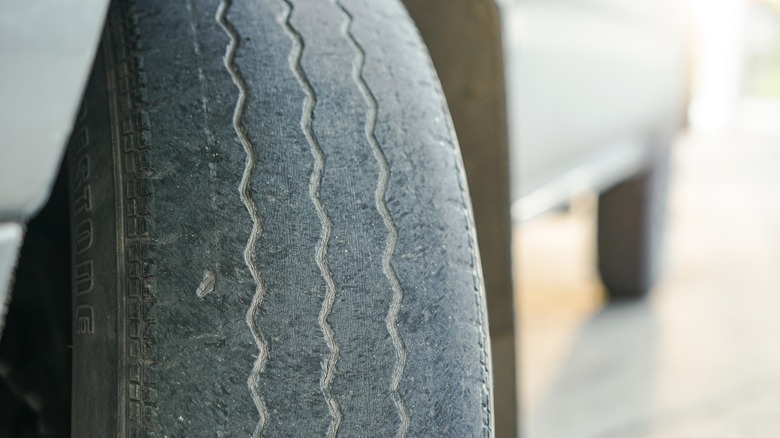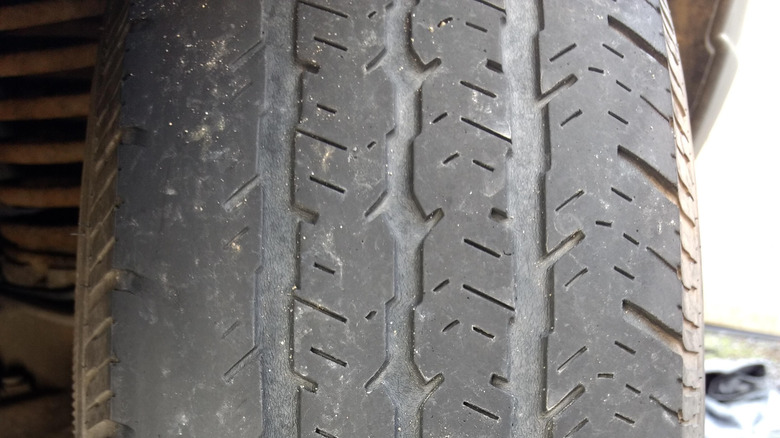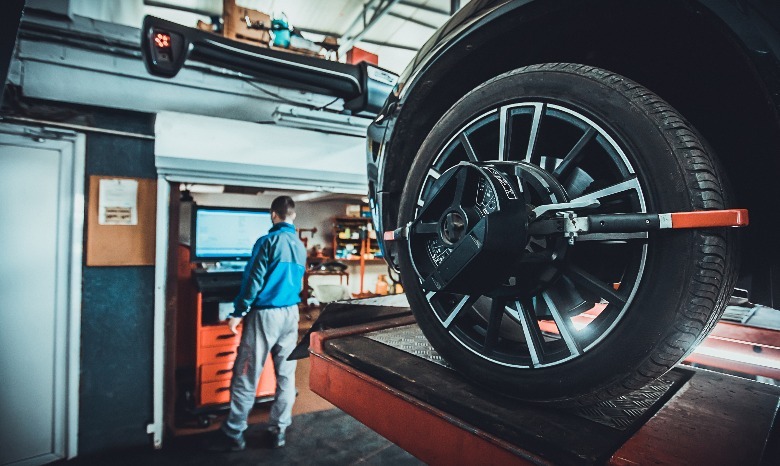Top Reasons Your Tires Are Wearing On The Inside (And How To Fix It)
Preventing dangerous tire issues or blowouts has everything to do with conscientious tire maintenance. If you regularly check your car's oil, coolant, and transmission fluid, take a few moments to inspect the tires on all fours as well. Ensure to inflate the tires correctly (underinflated tires will cost money at the pumps), and replace worn-out tires immediately. Driving with bald tires is dangerous and increases the risk of accidents caused by poor tire traction or blowouts.
However, there's another thing to watch out for when inspecting tires: irregular treadwear. In an ideal scenario, the driving wheels (either front, back, or all) should wear faster. But if the treads are wearing out in different places, you probably need to set aside some money for suspension, steering, or chassis repairs.
Irregular wear on the center tread means an overinflated tire. On the other hand, driving with underinflated tires causes the inner and outer edges of the tire to wear faster than the center.
Why are my tires wearing on the inside?
If the inner shoulder of your tires (the part nearest to the suspension) is deteriorating faster than the outside shoulder, it could point to multiple issues. The most common is worn ball joints, the part that connects the suspension control arms to the wheel hub.
Ball joints are relatively durable and could last years without showing issues, but age and excess friction could alter the camber settings and lead to premature tire wear. Failing ball joints could give your car a negative camber angle, which tilts the upper portion of the wheel inwards and the lower outwards, leading to more wear on the inside shoulder.
Moreover, those failing ball joints could alter the toe alignment settings, determining if the tire faces in (toe-in) or out (toe-out) from a straight-line vantage point. Premature wear could also mean defective control arm bushings, worn-out coil springs, leaking dampers, or bad suspension bushings, problems that could all cause the alignment to change while driving.
Bring your car to a mechanic or repair garage immediately at the first sign of irregular tire wear. The problem could be as simple as a wheel re-alignment, or as complicated as a suspension overhaul. Nevertheless, make it a habit to inspect your car's tires monthly to prevent minor problems from becoming an expensive repair job.


